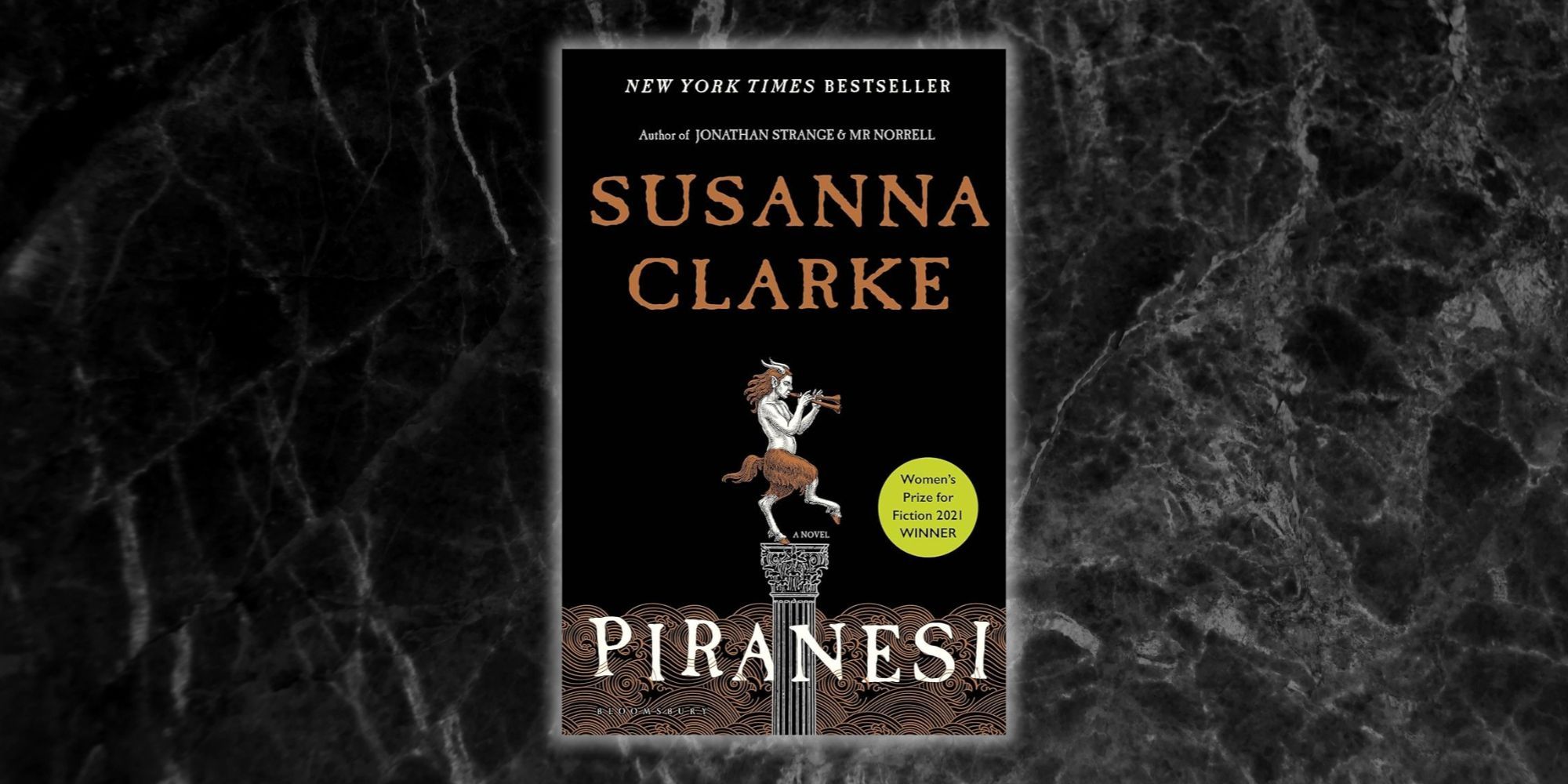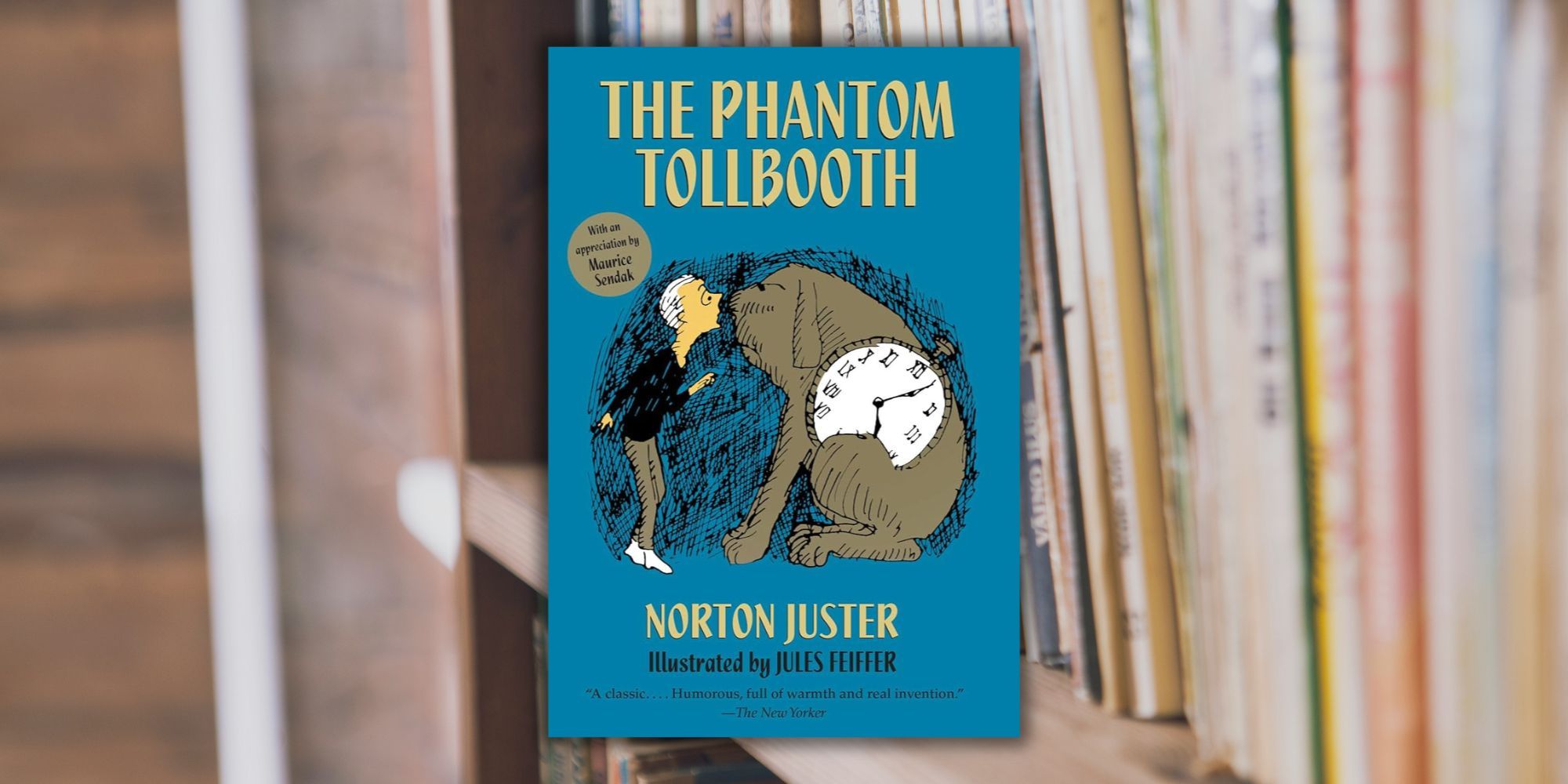Summary
- Bite-sized fantasy reads under 300 pages offer intuitive storytelling with original elements.
- Standalone works by Neil Gaiman and Terry Pratchett deliver impact in short lengths by using established tropes.
- Anthologies like
Vampires Never Get Old
provide fresh takes on classic fantasy themes, also within a reasonable number of pages.
There are plenty of lengthy fantasy book series worth committing to, but readers are sometimes in the mood for a bite-sized fantasy experience of 300 pages or less. Books like this face the challenge of cramming world-building into a much smaller read, so sometimes, they don’t bother with world-building or exposition at all. The experience of reading them is much more intuitive; readers must give themselves over to the feeling of the story rather than demanding strict logic.
Fantasy legends Neil Gaiman and Terry Pratchett are the authors of some amazing standalone fantasy books, but only a select few titles from their careers pull off their usual impact in less than 300 pages. Authors can get away with a shorter story by utilizing established tropes, so the reader understands the framework while enjoying the original elements. On the other hand, those looking for a short fantasy read might turn to anthologies, which comprise many shorter stories to be read on their own while still totaling less than a few hundred pages.
|
Book |
Release date |
|---|---|
|
The Phantom Tollbooth |
1961 |
|
The Colour of Magic |
1983 |
|
Matilda |
1988 |
|
Coraline |
2002 |
|
The Tale of Despereaux |
2003 |
|
The Honey Month |
2010 |
|
The Ocean at the End of the Lane |
2013 |
|
Vampires Never Get Old: Tales With Fresh Bite |
2020 |
|
Piranesi |
2020 |
|
I’m Afraid You’ve Got Dragons |
2024 |
10 Coraline
By Neil Gaiman
Coraline is a children’s movie that is actually terrifying, doing justice to Gaiman’s story through vivid stop-motion animation. However, the book upon which the movie is based is a different kind of scary; a Stephen King-style horror story for beginners. Because Coraline figures out the Other Mother is not to be trusted much sooner, there is less of a theme of a wish having gone wrong. She was bored, but she would always have been targeted by the Other Mother, even if she had left well enough alone.
The book’s simple presentation is almost deadpan, even as the characters say progressively creepier things. Readers are treated to additional sardonic characterizations and morbid setting descriptions through Coraline’s perspective, while the girl’s bravery is emphasized differently. The movie adds several elements and characters, meaning that the book is inherently more condensed in its narrative and themes.
9 The Colour Of Magic
By Terry Pratchett
There are only too many reading orders of Pratchett’s Discworld books, with several different starting points and a few contained subseries that follow specific sets of characters. However, those looking for a short and sweet experience can go back to the beginning with the first Discworld novel ever published: The Colour Of Magic. This book is the original introduction to the bizarre, fantastical, and comedic setting of Discworld, where a flat planet exists on the backs of four elephants who stand atop a giant turtle, and an unskilled wizard called Rincewind sets out on a genre-defining adventure.
Anyone familiar with the author knows that the journey will be whimsical and hilarious.
Pratchett said that he hoped Discworld would “do for the classical fantasy universe what Blazing Saddles did for Westerns,” while The Colour of Magic is the start of Rincewind’s seven-book subseries. Pratchett’s sarcastic sense of humor comes through as Rincewind is hired as a guide for an even more incompetent clerk, leading to the book ending on a cliffhanger. Anyone familiar with the author knows that the journey will be whimsical and hilarious.
8 Vampires Never Get Old
Edited By Zoraida Córdova & Natalie C. Parker
Vampires Never Get Old: Tales With Fresh Bite is the first in the Untold Legends series of fantasy anthologies, each emphasizing different supernatural beings. Comprising short stories by various popular authors, Vampires Never Get Old is advertised with the line: “Welcome to the evolution of the vampire―and a revolution on the page.”The eleven vampire stories cover historical, feminist, body image, and LGBTQ+ themes while reminding everyone that vampires are a force to be reckoned with — which is exactly what some of these characters aspire to.
This is perfect for those looking for inclusive takes on legends like Dracula and something fresh in the vampire genre in the wake of Twilight TV show reboot announcements. Vampires are a genre that was at one point very oversaturated and got a bad reputation, but these short stories represent something completely different and much-needed, all in under 300 pages. Readers who enjoy this one can then pick up Mermaids Never Drown: Tales to Dive For.
The third
Untold Legends
book,
Faeries Never Lie: Tales to Revel In
, is expected September 24, 2024.
7 Matilda
By Roald Dahl
Most of Roald Dahl’s children’s novels are on the shorter side for anyone looking for a quick, classic read. However, Matilda is still a highlight of Dahl’s career and a bittersweet underdog story. Matilda’s story is tragic, illustrating how helpless she and her classmates feel in the face of an unjust world over which they have no control. A hallmark of Dahl’s books is cruel adults and children who have the agency to make their situation better. Therefore, the universe conspires to help them by granting Matilda powers and cleverness.
Matilda has a natural academic talent as well as randomly being bestowed supernatural powers, but she works to become a strong reader and perfect telekinesis. Matilda also beautifully fosters a love for literature and learning and shows the characters finding kind people even in their unfair world. Additionally, Matilda in particular is the selection of Dahl’s quirky writing everyone should read because of the worldwide phenomenon the musical adaptation became.
6 Piranesi
By Susanna Clarke
Piranesi is a very abstract novel with classical vibes, which will leave the reader mulling things over in their head long after reading the last page. The title character lives in a strange world he refers to called the House and meticulously tracks everything that goes on there. However, a new arrival in the House will prompt Piranesi to investigate its phenomena further and uncover the disturbing truth about how he came to be there.
Piranesi is based on strong themes about the identity forged in imprisonment. Ron Charles formulated the theory (via The Washington Post) that Piranesi unintentionally resonated with the experience of lockdown (its publication in 2020 means that it was likely conceptualized before the height of the pandemic). Additionally, the motivations behind the novel’s main conflict retread ground concerning the cost of making groundbreaking discoveries. While Piranesi is a short novel, it is still very weighty and more difficult to read.
5 The Phantom Tollbooth
By Norton Juster
The Phantom Tollbooth bears a strange resemblance to Matilda in that it also stresses themes of learning and mental engagement. By means of a magical tollbooth mysteriously delivered to him, a bored boy called Milo finds himself in a world where letters and numbers are tangible concepts. One king advocates for the supremacy of literacy while another argues for mathematics. These rulers banished their younger sisters Rhyme and Reason after the princesses said that numbers and letters are equally important.
Milo finds himself with the clear goal of bringing the princesses home, a mission steeped in symbolic implications. The Phantom Tollbooth features a lot of witty prose, highlighting themes of petty political disputes and the need for rhyme and reason as well as strict facts. The point of it all is for Milo to find that there are many engaging things to be discovered in the world, concluding with him returning home to a world he now finds very fascinating.
4 The Honey Month
By Amar El-Mohtar
Amar El-Mohtar was gifted a box of honey samples and subsequently wrote The Honey Month, a collection of short stories and poems each inspired by a different flavor of honey. These short stories are *short* — only three or four pages at the most, while the majority are only one or two pages. This anthology is a delightful, seductive reading experience comprising brief bursts of emotion tied up with the profile of each honey’s color, smell, and taste.
The Honey Month is incredibly clever and sweet as honey.
El-Mohtar translates the taste of each honey into expressions of emotion that are romantic and sexual or familial, occasionally touching upon the relationship between humans and the rest of the natural world. The Honey Month is still a soft fantasy anthology in its own unique way, with surreal depictions of anthropomorphism and the occasional appearance of a faerie-like being. Overall, The Honey Month is incredibly clever and sweet as honey.
3 The Tale Of Despereaux
By Kate DiCamillo
The Tale of Despereaux breaks the fourth wall throughout in service of heightening its fairy tale aura. The narrator addresses the “reader” and repeatedly emphasizes the importance of storytelling, because “Stories are light” and “Light is precious in a world so dark.” It is a strangely satisfying perversion of a traditional fairy tale, where a smaller-than-average mouse is cast as a knight in shining armor who must rescue a princess. Meanwhile, the characters who prompt the conflict are sad figures who are also searching for light.
The Tale of Despereaux is also a very fast and easy read — it can possibly be finished in one sitting. Yet readers may find themselves re-reading it sooner rather than later, indulging in the deeply hopeful dialogue. Kate DiCamillo’s writing is often like this, showcasing strange bits of ordinary magic and how they create ripple effects that change many lives for the better.
2 The Ocean At The End Of The Lane
By Neil Gaiman
Gaiman tells an ever more mature storyline than Coraline in The Ocean at the End of the Lane, demonstrating the wide variety of his fantasy. Gaiman does fairy tales with twists like Coraline and Stardust, commentative mythological reimaginings like American Gods and Sandman, and hilarious collaborative projects like Good Omens. Yet The Ocean at the End of the Lane still defied what people expected from Gaiman’s writing, delving into more abstract concepts.
Following a man who returns to his hometown and remembers a mysterious family of women from his childhood, The Ocean at the End of the Lane delves into themes of childhood vs. adulthood and long-forgotten friendships. The fantasy, even darker than that of Coraline and Stardust, is interesting and has much bigger symbolic implications than logical ones. As the entire story happens in the memory of the POV character, it is even more effective when it is brief.
1 I’m Afraid You’ve Got Dragons
By Peter S. Beagle
The title I’m Afraid You’ve Got Dragons is quirky enough to grab anyone’s attention, and it is what it sounds like. A few years since his last novel, Peter S. Beagle returned in May 2024 with I’m Afraid You’ve Got Dragons, which follows dragon exterminator “Robert” who hates his job because he likes dragons. Of course, Robert soon finds himself at the center of a different adventure told through Beagle’s funny yet saddening style.
Melancholy is a huge theme in Beagle’s writing, as he is most famous for the lonesome novel about the loss of innocence with themes of environmentalism, The Last Unicorn. I’m Afraid You’ve Got Dragons quickly won the same praise as Beagle’s previous novels, proving that it is something everyone should check out. Yet they need not worry about the commitment of I’m Afraid You’ve Got Dragons, which will be a quick read, offering the kind of enjoyment only short novels can.
Source: The Washington Post














